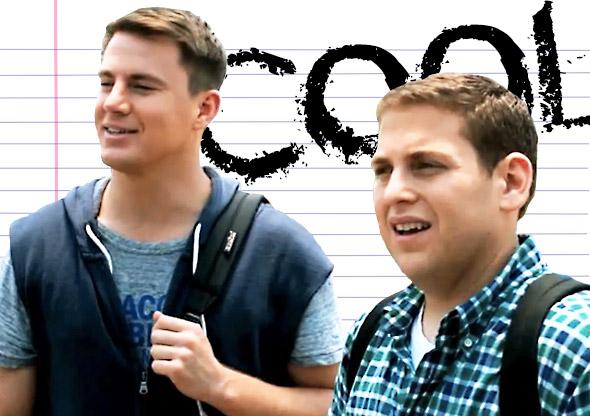Toward the beginning of the 2012 comedy 21 Jump Street, Officer Jenko (Channing Tatum), a onetime cool kid, gives his partner some advice as they prepare to infiltrate the ranks of the cool kids at Sagan High. “You gotta one-strap it,” Jenko chides Officer Schmidt (Jonah Hill). Schmidt, a onetime nerd, is two-strapping—wearing his backpack over both shoulders. That is not, warns Jenko, what cool kids do.
This advice may sound obvious to all cool kids of a certain age, but when the officers make their debut at school, times have changed. Jenko’s attitude—“I don’t care about anything,” he announces—has gone out of style. The cool kids are into diversity, environmentalism, and, worst of all, trying. And symbolizing this generational sea change: “Everybody’s two-strapping it,” notes Schmidt.
When I first watched this scene, I thought: Funny bit, but is it right? I, like everyone cool (or trying to be cool) in my high school, one-strapped all the way. It was a foundational tenet of cool—you might argue about what kind of music was cool, or what clothes, or what hairstyles, but it was a given that one-strapping was the only way to wear a backpack. Is one-strapping really not cool anymore? And if so, how could something once so cool become so not? My search for the answer sent me on a quest in which I’d consult pediatric orthopedic surgeons, re-examine decades of pop culture, and track down the one consummately cool high-schooler from East Amherst, N.Y., who might have the answer.
The first step was obvious: determining if and when, exactly, this happened. Left without any serious research on the subject—even chiropractors and pediatric orthopedists who have studied the effect of backpacks couldn’t point to any data—I decided to collect some data myself.
After speaking with 75 ex-students and students from all over the country, spanning 60 years of high-schoolers—from the class of 1965 to the class of 2026—the data (however unscientific my polling) were clear. Every ex-student from the class of 1994 and earlier, 12 students, had, to a man, one-strapped. “Everyone one-strapped. No exceptions,” reported a graduate of the class of 1991. “I one-strapped all through college,” reported one of his female classmates.
Starting with the class of 1995, however, the number of two-strappers began to very slowly increase. One ’95-er, who noticed one particularly cool male classmate of hers switching to two-strapping, followed his lead. (More on him later.) A member of the class of ’97 remembered doing the same. Nevertheless, most still one-strapped—it was “the only way,” reported two separate members of the class of ’96. (One member of the class of 2001 even recalled, “Actually, I’m pretty sure I had a backpack that only had one big diagonal strap … What happened to those Forrest???”)
The real sea change from one strap to two seemed to occur in the mid-2000s. Before this time there was the occasional two-strapper, but starting with the class of 2005, two-strappers began to dominate, outnumbering their peers. “By high school, I’d say pretty much every guy did the two straps,” said one graduate of 2005 (who remembered that most women ditched backpacks altogether). “I don’t remember one-strapping ever being cool in actuality, it was always in theory,” mused another. “Like on TV if you were cool you had one strap, but in person it didn’t really make a difference.” (This was news to me and my classmates from Glastonbury High School’s Class of 2005, who largely remembered one-strapping being the only cool way.)
By the time the class of 2008 started shouldering their backpacks, the change was complete. Every backpack-wearing respondent from then on, from the class of 2008 through the class of 2027—20 former and current students—used both straps. More, they claimed that they always used two straps, and their classmates did, too. (The only exception was one current 5-year-old, who, according to his father, “occasionally one-straps.”)
For many, the idea of one-strapping was silly or uncool, or never even occurred to them. “I wore my backpack with both straps, as did most people,” wrote one 2010 graduate. “I don’t remember ever having a conversation about how to wear a backpack in high school; no one seemed to notice.” “I think one-strapping, even temporarily, is unnecessary and unhelpful,” wrote one 13-year-old. A former college classmate of mine even told me, “I now teach sixth grade and it’s all about the backpacks with the extra straps and clasps. All straps on, all clasps closed.”
Extra straps? Something had happened, starting around the mid-’90s, and finishing around the mid-’00s, that changed the way that kids wear their backpacks. But what could have caused such a radical shift in behavior? Intense data analysis, interviews, and archival research led me to three hypotheses.
* * *
1. The Cultural Hypothesis
If one-strapping, and later two-strapping, were about being cool, then something in the nature of cool must have changed. I turned to the source that tells us what’s cool: pop culture.
It’s no surprise at all that movies and TV reflected the above trends almost exactly. Take a look at any ’80s teen movie—Fast Times at Ridgemont High (1982), or Heathers (1988)—and you’ll find almost nothing but one-strappers. In Fast Times, for example, one-strapping isn’t about clique or comportment. It’s just what everyone does. Students of every type sport one bare shoulder, whether it be the ripped shoulder of surf-stoner Jeff Spicoli (Sean Penn) or the skinny one of dutiful Brad Hamilton (Judge Reinhold).

Jeff Spicoli (Sean Penn) and Brad Hamilton (Judge Reinhold) both one-strap.
Universal Pictures
In ’90s movies, the trend, at first, continues. When the title character returns to high school for the first time in years in Billy Madison (1995), everyone is one-strapping. In Clueless (1995), Cher (Alicia Silverstone) laments the way that all the guys walk around her high school’s campus dressed like this:

In Clueless, just about everyone one-straps.
Paramount Pictures
But then things start to shift. In Election (1999), the way characters carry their book bags helps define their characters. The overachieving Tracy Flick (Reese Witherspoon) wears her bag over both arms. Her opponent, the airheaded Paul Metzler (Chris Klein), covers only one of his athletic shoulders.
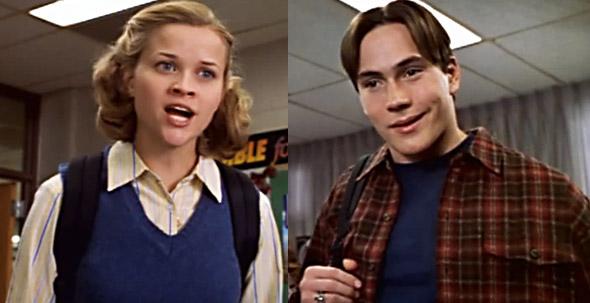
Paramount Pictures
In 10 Things I Hate About You (1999), similarly, it’s a mix. Most of the heroes—when they use backpacks—two-strap, and the one-strappers tend to be students like the conceited Joey Donner:
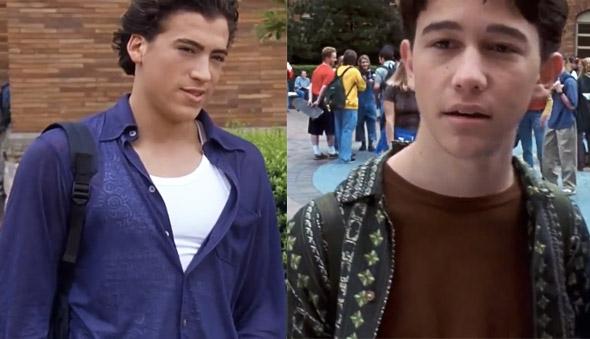
Touchstone Pictures
In other words, these movies reflect a trend away from depicting everyone one-strapping and toward using one-strapping as a broad way to signal “cool kid” or, in the case of characters like Donner, “douchebag.” From the mid-2000s on—from Brick (2005) to the High School Musical trilogy (2006–2008) to Easy A (2010)—teen movies seem to have shown just about everyone two-strapping it. In The Amazing Spider-Man (2012), when Peter Parker protects his (two-strapping) classmates by battling the Lizard in the halls of his high school, he two-straps it the whole time.
These movies also point to broader changes in the culture that may have helped cause this. The first is the rise of skate culture. Like two-strapping, skate culture exploded in the late ’90s and early ’00s. After Tony Hawk completed the first 900 in 1999, and released the first Pro Skater video game later that year, the TV series Jackass premiered in 2000. By 2001 there were more kids on skateboards than on baseball diamonds, according to one study. What does this have to do with two-strapping? Skate culture had its own style, too—by 2004, skating apparel was bringing in billions of dollars a year—and skaters two-strap, to keep their balance. Moreover, even when they’re off their boards, it’s customary to carry them across their backs while two-strapping. Here was a uniform of the rebel, the cool kid, that required two-strapping.
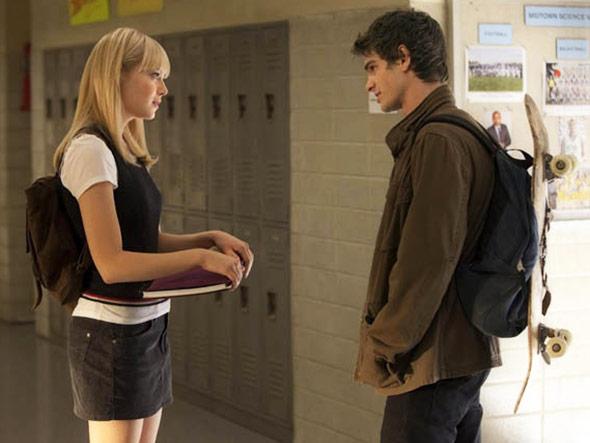
Columbia Pictures
There was another form of rebellion against the (one-strapping) mainstream in the music world. While it had been around for years, “backpack rap”—underground rap, historically opposed to the mainstream—broke to the front of hip-hop culture in the mid-2000s. Above all, this was due to the widespread influence of Kanye West, the self-proclaimed “first n—a with a Benz and a backpack,” who (after two-strapping it since high school) brought his “backpack prep” look to the forefront of the new hip-hop mainstream. He even wore backpacks onstage in many 2004–2006 performances—and he always did it while two-strapping.
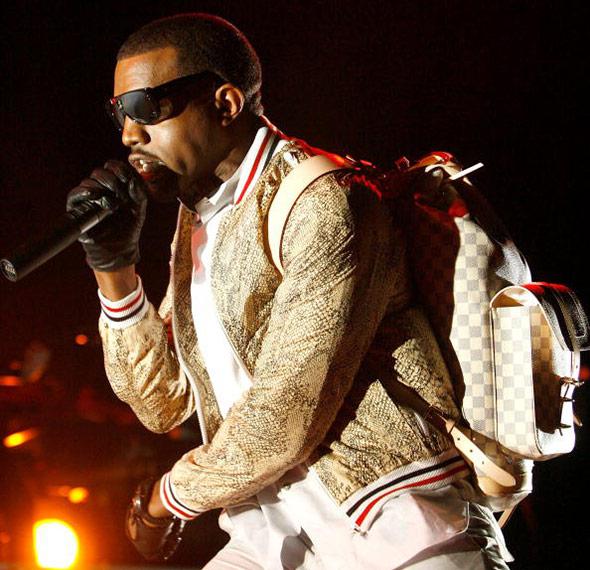
Sean Gardner / Getty Images
There’s one last trend that I would suggest helped make two-strapping OK, albeit another one not entirely unrelated to Kanye: geek chic. Starting around the mid-2000s, not long after the rise of backpack rap, celebrities like West and Justin Timberlake and NBA players like Kevin Durant and Dwyane Wade started to button up with thick-rimmed glasses and backpacks—always worn with both straps. Geek chic turned the world upside-down: What was once the ultimate in nerdiness was now the ultimate in cool.
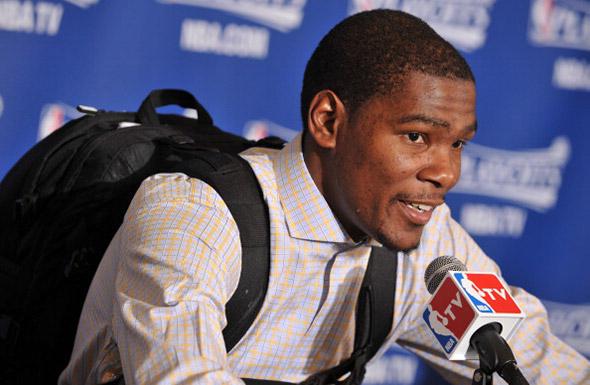
Kevin Durant two-straps at a postgame press conference in April 2011.
Garrett W. Ellwood / NBAE via Getty Images
2. The Medical Hypothesis
From survey respondents who had switched midchildhood from one-strapping to two-strapping, I heard one memory again and again: complaints of adolescent back pain. According to one member of the class of 2004, “one-strapping was ‘in’ in middle school, but in high school we had to carry so many goddamn books around that two-strapping was necessary and ‘cool’ didn’t matter anymore.” “Backpacks were just too heavy,” agreed a respondent from the class of 2005. For others, it wasn’t their choice: “Promising to two-strap it was the only way I could keep my mom from buying me a rolling backpack,” wrote a member of the class of 2008.
Could it have been concerns for back health that caused everyone to switch to two-strapping? I turned to the experts: pediatric orthopedic surgeons and chiropractors who have studied the subject.
The first thing that became clear is that pretty much everyone agrees that two-strapping is better for your back. “Always use both shoulder straps,” counsels the Pediatric Orthopaedic Society of North America, “to keep the weight of the backpack better distributed across the child’s back.” The National Safety Council and the American Chiropractic Association agree. And even though heavy backpacks do not cause scoliosis or make any curvature worse, the old myth that they do persists.
But could these warnings have caused such a massive change in behavior? The pediatric orthopedic surgeon I talked to was doubtful. “There have been public awareness campaigns about backpack weight and wearing them properly,” wrote Dr. Nirav Pandya of the University of California–San Francisco, “but that does not trickle down to the school level as kids are forced to simply lug such a huge amount of weight around.” He added that he didn’t think backpack injures have gone up or down: “Although there is no good data, I would say backpack injuries have remained constant.” How could this be? Because “students still have such a large amount of weight on their back,” he explained, it ends up being a “huge strain” “regardless of strap (one vs. two).” Similarly, neither Pandya nor any of the other experts I contacted could point me to any research on whether backpack weight has increased or remained constant, though both Pandya and chiropractor Scott Bautch, who consulted with the North Face on ergonomic backpack designs, pointed out that the trend toward e-learning should lighten backpacks.
Regardless of whether backpacks have gotten lighter or heavier, there’s another trend that we do know about: Since the late ’90s, many schools have been getting rid of lockers. According to a 2006 study from the Journal of Pediatric Orthopedics, the lack of lockers is one of the biggest factors contributing to book-bag-associated back pain, since students without lockers often have to carry around more books. While some schools started getting rid of lockers as early as 1989 (to combat noise and eliminate a place where students could hide guns or drugs), more schools began looking into it after the 1999 mass shooting at Columbine High School. In 2011 Peter Lippman, an architect serving on the American Institute of Architects’ Committee on Architecture for Education, said the trend was still growing.
In other words, even if backpacks aren’t getting heavier, students with no lockers carry more books more miles per day; if you’re humping a day’s worth of textbooks from classroom to relocatable trailer and back, you just might switch from one strap to two.
3. The Tom Ferguson Hypothesis
To explain this final theory, I have to tell you a story. It’s not my story, but rather one told to me by my colleague Jessica Winter, a Slate senior editor.
Of my 75 respondents, she was the earliest to two-strap, dating her ambistrappage to the fall of 1991. According to Jessica, all through middle school, she had always one-strapped. All her peers did, too. Then, one day her freshman year, everything changed. She was walking down the hallway at her high school in East Amherst, N.Y., when she noticed one of her classmates, Tom Ferguson, coming her way. With a defiant look on his face, he was doing something that in an instant overturned Jessica’s understanding of cool and uncool, of fashion and style, of confidence and strength: He was two-strapping.
“You did not wear your backpack on two shoulders,” she explained to me, describing the then-current trend at Williamsville East High School. “It was not done.” But Tom Ferguson changed everything. He was the coolest guy in the school, she explained. “He knew about Smashing Pumpkins when Gish came out. He knew about Nirvana before Nevermind came out. Basically Tom Ferguson would tell you about a band and then you would take your babysitting money and buy a tape by that band.” All that, and he was tall.
“I remember saying something to him to express my surprise and confusion,” she continued. “But he just sort of stared at me and shrugged.” Jessica Winter, no fool she, didn’t shrug. She slipped her arm through her dangling backpack strap and, from that day forth, wore both straps. Everybody else, too, soon followed suit. “It was now cool to wear your backpack on two shoulders. Because Tom Ferguson wore his backpack on two shoulders.”
How could one 14-year-old have such power? “He also had a singularly glassy affect,” Jessica recalled, “that somehow managed to be almost embarrassingly nerdy and intimidatingly cool at the same time. … I’m trying to think of an example of what I’m talking about. Early Rivers Cuomo comes closest—Cuomo in ‘The Sweater Song’ video is very Tom Ferguson.” In other words, Tom Ferguson was geek chic. But, of course, this was years before geek chic, years before Kanye and Dwyane, years before “The Sweater Song” even came out.
Tom Ferguson soon moved away, and he and Jessica are long out of touch. But if I was going to get to the bottom of this, I needed to talk to him. After a little searching on Facebook, Jessica was able to track down a Thomas Ferguson in Asheville, N.C., and she was pretty sure it was him. After my Facebook messages went unanswered—was Tom Ferguson too cool to check Facebook?—I began trying the phone numbers of every Tom Ferguson listed in the Asheville area. Most of the Thomas Fergusons and T. Fergusons who answered were very nice, but they were not the Tom Ferguson of Williamsville East High. But just as we were about to publish this article, I got a call.
It was the Tom Ferguson. “I don’t remember it being a conscious decision,” he said, utterly unperturbed by the fact that I had been leaving frantic messages on his phone. “I remember trying to wear it over one shoulder, and at some point I decided I didn’t care anymore whether it was cool or not.” Did he skateboard? “Not usually while wearing my backpack,” he said. And no, he did not listen to underground hip-hop. “This is way more than I’ve ever thought about this topic,” he advised me. But still, when he carries his backpack on his way to Asheville’s T.C. Roberson High School, where he is now a teacher, he says, “I wear it over two shoulders.”
Tom Ferguson hadn’t changed his habits because of back pain or because of what some movie told him to do. He did it because he was truly cool, because he didn’t care. If the self-sure will of one young man like Tom Ferguson could singlehandedly revolutionize cool for an entire school, could this spread to other schools as well? Could Tom Ferguson—or someone like him—be the two-strapping Patient Zero?
* * *
The most likely conclusion, of course, is that a combination of the factors in all three hypotheses led to dual-strap ascendance. There were surely some early Tom Fergusons, defiant in the hallways, and then others picking up on larger trends in pop culture, and then others who threw on the second strap just because their back hurt. If your back hurts, after all, it’s no longer effortless to one-strap. And if you’re no longer effortless, you’re no longer cool.
This also means, of course, that the fashion could shift back to one-strapping at any time. With a few more lockers, or a new generation of Tom Fergusons, or more Kindles to keep bags light, everything could soon change. As the “Cool Story” series has shown, cool is malleable and ever-changing. In the meantime, Kanye has already started one-strapping.
